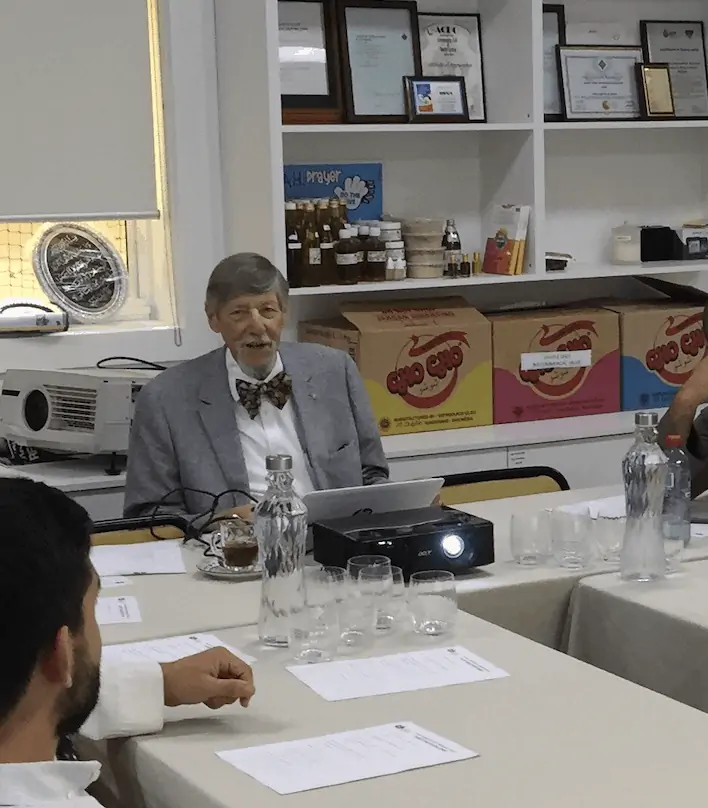By Gary Bouma
Introduction and Summary: Dutch Religious Influences in Australia’s Multicultural Landscape
Based on Gary D. Bouma’s “The Religious Contribution of Dutch Migrants to Multicultural Australia”
Dutch post-war migration to Australia is often told in terms of economic resilience, cultural adaptation, or family stories of hardship and hope. But less commonly explored—yet equally influential—is the religious contribution Dutch migrants have made to Australian society. In this insightful sociological study, Gary Bouma takes readers beyond denominations and into the deeper structures that shape religious life: the expectations, norms, and frameworks that migrants carry with them and, over time, embed into their new social surroundings.
Bouma’s central argument is clear: Dutch migrants brought with them not just personal beliefs or congregational preferences, but an entire religious institution—a system of social norms about how religion operates in society. This institution, rooted in the Dutch model of verzuiling (pillarisation), fundamentally shaped how Dutch migrants interacted with Australia’s comparatively relaxed and lightly institutionalised religious environment.
Understanding verzuiling: a Dutch religious mindset
At the heart of Bouma’s analysis is the concept of verzuiling—a Dutch social structure in which religious and ideological communities operate in parallel “pillars,” each with its own schools, media, political parties, unions, and churches. This model encouraged peaceful coexistence and mutual respect between distinct religious groups, but also normalised religious separation and competition. Migrants from this background arrived in Australia expecting religious plurality to be actively organised—not just tolerated or privately observed.
This structural backdrop provides an important context for understanding why Dutch migrants responded the way they did to Australia’s own religious institution—where Anglicanism dominated numerically and culturally in 1947, but where actual religiosity was lukewarm, and religious difference was more a matter of heritage than practice.
Three Dutch migrant streams: Reformed, Catholic and Secular
Bouma explores how three different segments of Dutch society—Reformed Protestants, Catholics, and secular Dutch—navigated the Australian religious landscape.
- The Reformed Dutch
A hallmark of the Reformed Dutch experience was the creation of a new denomination in Australia: the Reformed Churches of Australia. This development puzzled many Australians, who felt that the country already had enough denominations. Yet for Dutch Reformed migrants, especially those with strict Calvinist roots, maintaining theological purity and institutional integrity was non-negotiable. When Australian churches could not accommodate their doctrinal practices, they established their own religious infrastructure. Bouma interprets this as a continuation of Dutch religious patterns, where even minor theological disagreements historically led to new denominations. This group also sought to recreate other elements of verzuiling, such as parent-controlled schools—and, at times, even a separate university—though these efforts had limited success. - The Catholic Dutch
The Catholic Dutch arrived with high expectations of institutional support and ethnic expression within the Church. Initially encouraged by both Dutch and Australian Catholic authorities, hopes for separate Dutch-language parishes were quickly quashed by the Irish-dominated Australian hierarchy, which favoured integration over ethnic separation. While chaplains and informal communities existed in major cities like Melbourne and Sydney, the denial of formal ethnic parishes left many Dutch Catholics disappointed. Nevertheless, they bolstered existing Catholic parishes and brought with them a deep sense of lay commitment and organisational involvement that added texture to Australian Catholicism. - The Secular Dutch
Perhaps surprisingly, the secular Dutch may have integrated most easily. Coming from a country where ‘no religion’ had long been a valid census response, they found Australia’s casual religiosity familiar and accommodating. Far from being alienated, many secular Dutch simply slipped into Australian life, contributing to the growing group of Australians who identify with no religion—though with a European sense of tolerance rather than hostility toward religious difference. Bouma poses an intriguing question: how did these secular Dutch interpret Australian institutions such as trade unions and media—did they perceive subtle religious overtones, or were these acceptably secular?
A model for modern religious pluralism
While this paper is rooted in historical migration, its implications are contemporary. Australia today is a highly diverse, multifaith society. Bouma suggests that the Dutch experience of verzuiling offers a useful template for managing pluralism—not through forced integration or erasure of difference, but by fostering parallel communities built on mutual respect and social legitimacy.
Dutch migrants arrived in Australia with a vision of religious coexistence that was sophisticated, structured, and inclusive. They were among the first post-war migrants to challenge the laid-back Australian norm of casual belief, bringing with them both seriousness of faith and comfort with diversity. In doing so, they helped shape an emerging Australian religious institution—one that continues to evolve as new waves of migration reshape the country’s cultural and spiritual landscape.
Why this study matters
This chapter is essential reading for anyone interested in migration, religion, or multiculturalism. It offers:
- A compelling sociological lens on how religion travels across borders
- A case study in how religious structures, not just beliefs, adapt to new societies
- Insights into the formative role Dutch migrants played in Australia’s religious evolution
- A rare perspective on secular migrants and how their worldview interacts with religious institutions
In a time when managing religious diversity is more critical than ever, Bouma’s work offers not only a window into the past but a set of tools for the future.
Professor Gary D. Bouma AM

Gary was the Director of the Global Terrorism Research Centre at Monash University; the UNESCO Chair in Intercultural and Interreligious Relations – Asia Pacific; Emeritus Professor of Sociology; and Associate Priest at St John’s Anglican Church, East Malvern. Gary also served on the Interfaith Advisory Board at the Victorian Multicultural Commission and was a widely published author.
Gary worked in partnership with the AMF on key pieces of research including the Australian Human Rights Council’s 2011 report titled Freedom in Religion and Belief and the Department of Immigration and Multicultural Affairs’ 2004 report titled Religion, Cultural Diversity, and Safeguarding Australia. Gary passed away in 2021, aged 79.
